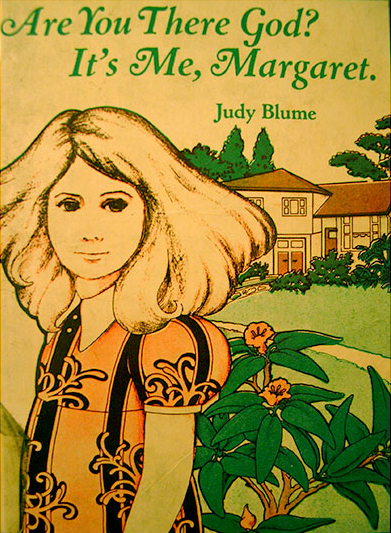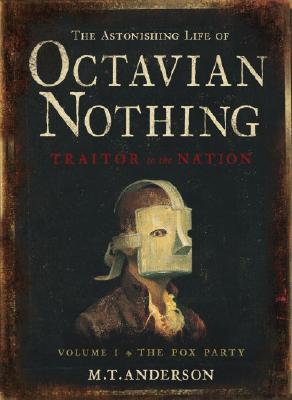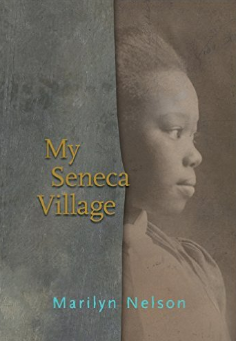Theme Essay by Stephen Roxburgh
Why YA? A Longtime Editor Surveys the Field
The most significant development in publishing in the last forty years is the emergence of a vibrant young adult literature. In the long run, this is far more important than the digital revolution. There is now a vast reading public of all ages who know what the genre has to offer and who look to it when they want something good to read. That reading public for young adult books is growing and will keep growing, and publishers—large and small, mainstream and nontraditional—are committing enormous resources to meet its needs.
 For the new reader, it’s a golden age of young adult literature. When I started in publishing forty years ago, YA literature was in its infancy. In the 1970s, authors like Judy Blume (Are You There, God? It’s Me, Margaret), S.E. Hinton (The Outsiders), Robert Cormier (I Am the Cheese), and Paul Zindel (The Pigman) took on what were then controversial topics for kids: religion, class differences, childhood trauma, teen sexuality. These new books were very exciting compared with the Happy Hollisters, the Hardy Boys, and other generally rose-tinted stories about children and young adults that had prevailed in the marketplace for decades.
For the new reader, it’s a golden age of young adult literature. When I started in publishing forty years ago, YA literature was in its infancy. In the 1970s, authors like Judy Blume (Are You There, God? It’s Me, Margaret), S.E. Hinton (The Outsiders), Robert Cormier (I Am the Cheese), and Paul Zindel (The Pigman) took on what were then controversial topics for kids: religion, class differences, childhood trauma, teen sexuality. These new books were very exciting compared with the Happy Hollisters, the Hardy Boys, and other generally rose-tinted stories about children and young adults that had prevailed in the marketplace for decades.
But at the time, the reception of the field by authors, agents, editors, and reviewers—pretty much everyone involved—was mixed. One example will suffice: When Carolyn Coman—my author at Farrar, Straus and Giroux then, my wife now—submitted her first novel to an agent, he told her, “If you write for young adults, you can kiss your career goodbye.” (As it happens, she didn’t; she’s a Newbery and Printz honoree and a two-time National Book Award finalist.) The inauguration of the now venerable Michael L. Printz Award by the American Library Association in 2000 (for books published in 1999) was a milestone in the evolution of the genre.
Today, two generations later, YA is grown up. Ironically, more and more so-called “adult writers,” encouraged by their agents, are writing for young adults. The genre is also breaking out of its boundaries, with the crossover between adult and young adult that’s apparent in the “new adult” category and the burgeoning of graphic novels that defy facile categorization. M.T. Anderson’s The Astonishing Life of Octavian Nothing (Candlewick Press, 2006), Nicole Pietsch’s Sideshow of Merit (namelos, 2013), and Alison Bechdel’s Fun Home (Houghton Mifflin Harcourt, 2006) are noteworthy examples. Such boundary breaking is not only great for readers; it anticipates the impact the digital revolution is having on publishing, including YA literature.
 The impact of this revolution on children’s and teen reading is much debated, largely because it’s big business. But tracking the ups and downs of the publishing business will more likely result in whiplash than insight. Last December, for instance, Jonathon Sturgeon, literary editor of Flavorwire, observed that YA and children’s books were “substantially driving total e-book sales.” Less than six months later, he wrote that revenues from e-books were “nearly in freefall, especially in the category of Children/Young Adult books.” A Nielsen report from last December, “Don’t Judge a Book by Its Cover: Tech-Savvy Teens Remain Fans of Print Books,” is a more useful indicator of what’s going on. It notes that teens “lag behind adults when it comes to reading e-books…. [and] continue to express a preference for print that may seem to be at odds with their perceived digital know-how.”
The impact of this revolution on children’s and teen reading is much debated, largely because it’s big business. But tracking the ups and downs of the publishing business will more likely result in whiplash than insight. Last December, for instance, Jonathon Sturgeon, literary editor of Flavorwire, observed that YA and children’s books were “substantially driving total e-book sales.” Less than six months later, he wrote that revenues from e-books were “nearly in freefall, especially in the category of Children/Young Adult books.” A Nielsen report from last December, “Don’t Judge a Book by Its Cover: Tech-Savvy Teens Remain Fans of Print Books,” is a more useful indicator of what’s going on. It notes that teens “lag behind adults when it comes to reading e-books…. [and] continue to express a preference for print that may seem to be at odds with their perceived digital know-how.”
It’s no surprise to me that YA readers still prefer print. Digital technology will not be generally embraced by teens until a generation has been raised with easy and ready access to the technology. For the youngest readers, only urban, affluent children can be said to have ready access now. And parental influence, conservative by nature, will always be a factor. It will take another generation before children of today’s digitally engaged parents become readers. That’s two generations before digital formats dominate the marketplace (assuming access is universal by then), just as it took two generations for YA books to be fully embraced by our culture.
Meanwhile, as a nontraditional publisher primarily of high-quality young adult novels, I am discouraged by the predominance of factory-like imprints that crank out whatever genre is popular at the moment. Harry Potter, Twilight, The Hunger Games, and others have spawned hordes of imitators. Still, such exploitation has been, is, and always will be the way of business. The success of Blume, Cormier et al. back in the ‘70s led to a glut of what came to be known as “problem novels” in the ‘80s. You can be sure that today’s innovations will spawn tomorrow’s imitations.
Around the edges of this inevitable deluge, though, major imprints are publishing brilliant books. Two striking examples this fall are M.T. Anderson’s Symphony for the City of the Dead: Dmitri Shostakovich and the Siege of Leningrad and Maggie Thrash’s Honor Girl: A Graphic Memoir. Not surprisingly, both are from Candlewick Press, the Boston-area publisher whose children’s and YA books are frequent award winners. Other major trade imprints offer gems as well—go look!
 In addition, the lists of nontraditional publishers overflow with experimentation and innovation. Just one example from namelos, my own imprint: poet Marilyn Nelson’s forthcoming My Seneca Village, a cycle of poems that recreates the nineteenth-century, multi-racial Manhattan neighborhood that was leveled to build Central Park. Nelson—a Coretta Scott King and Newbery honoree, three-time National Book Award finalist, and Connecticut poet laureate—sets the scene for each poem with a prose description, providing a personal vision of that lost community.
In addition, the lists of nontraditional publishers overflow with experimentation and innovation. Just one example from namelos, my own imprint: poet Marilyn Nelson’s forthcoming My Seneca Village, a cycle of poems that recreates the nineteenth-century, multi-racial Manhattan neighborhood that was leveled to build Central Park. Nelson—a Coretta Scott King and Newbery honoree, three-time National Book Award finalist, and Connecticut poet laureate—sets the scene for each poem with a prose description, providing a personal vision of that lost community.
For readers (and reviewers!), the trick is to separate the wheat from the chaff. Those booksellers who have adapted to the competition of cloud-based stores are the best source for mainstream publishers’ offerings, and digital technology provides the tools necessary to explore the fringes. Young adults are networked in ways that open up enormous opportunities for publishers and writers to find out what kids are reading. Word of mouth has always been the gold standard for book promotion, and social media—Facebook, Twitter, YouTube, Instagram, Vine—are nothing more than technologically enabled word of mouth. Teens own that space.
Which brings me to some good news for YA authors. Young adults don’t care who published you. As Isaac Bashevis Singer noted in his 1978 Nobel Prize acceptance speech, youngsters don’t read reviews, and “they don't give a hoot about the critics.”
The main challenge for today’s YA authors and illustrators is not the reading preferences of young readers, then, but the ongoing digital transformation of the publishing industry. The largest publishers remain the best channel to the book-buying public, but they can only publish titles that sell at sufficiently high levels to support their economic goals. This is fine for established authors who write strong-selling books. It’s not so fine if you don’t—and few do—or if you’re just starting out.
But thanks to digital and print-on-demand technology, there are now many more ways to publish your books, and the disdain that once shadowed nontraditional venues is much diminished. Self-publishing, in print and Internet-based, is often the first step in building a successful publishing career. With low entry costs, expanding distribution opportunities, and potential access to more readers than ever before, these are exciting times for publishing.
When I founded namelos just about seven years ago—on Barack Obama’s inauguration day, to be exact—I pitched it as “a new kind of publisher for the next generation of authors and readers.” I believed then and I believe now that the digital revolution and a new generation of readers have created an extraordinary opportunity for everyone who cares about young adult literature. The impact on the publishing and bookselling businesses may not be pretty, but consumer demand is inexorable. Readers love YA books; they also want less expensive content fast. The economies that result from eliminating the costs of paper, printing, and binding, combined with instantaneous digital distribution, are impossible to ignore.
New readers—as always, more sophisticated than any previous generation of readers—will soon have more or less immediate access to a vast array of content in whatever format they prefer. And new authors will have platforms that don’t rely on the same old gatekeepers. Traditional publishing conglomerates still control their gates, but as in all revolutions, the YA walls are coming down.
Publishing Information
- “Are You an Adult Who Reads YA Novels? Congratulations, You Saved Publishing in 2014” by Jonathon Sturgeon, Flavorwire, December 16, 2014.
- “Can Obama and Big Publishing Save Children’s and YA Ebooks?” by Jonathon Sturgeon, Flavorwire, May 4, 2015.
- “Don’t Judge a Book by Its Cover: Tech-Savvy Teens Remain Fans of Print Books,” Nielsen Reports, December 9, 2014.
- Isaac Bashevis Singer's speech at the Nobel Banquet, December 10, 1978.
 Stephen Roxburgh has been an editor for over forty years, working with authors and artists such as Felicia Bond, Nancy Ekholm Burkert, Roald Dahl, Madeleine L’Engle, Martine Leavitt, Patricia McCormick, An Na, George Selden, Maurice Sendak, Uri Shulevitz, Isaac Bashevis Singer, and Garth Williams.
Stephen Roxburgh has been an editor for over forty years, working with authors and artists such as Felicia Bond, Nancy Ekholm Burkert, Roald Dahl, Madeleine L’Engle, Martine Leavitt, Patricia McCormick, An Na, George Selden, Maurice Sendak, Uri Shulevitz, Isaac Bashevis Singer, and Garth Williams.
Stephen is the founder, president, and publisher of namelos. The name comes from a medieval German word meaning “nameless,” as in anonymous. He believes that editors should be heard by the author but not seen by the public, and the decision to lowercase “namelos” is in keeping with that philosophy. Stephen is also currently pursuing a Ph.D. in English literature at the University of New Hampshire.
